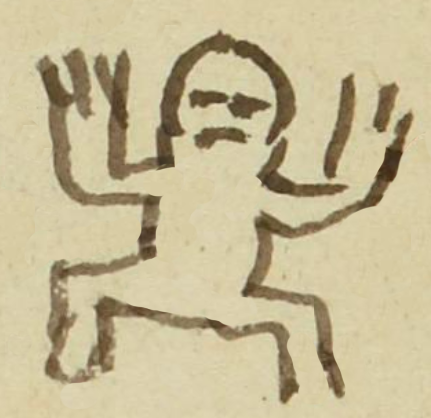Tlalconetl (MH577v)
This black-line drawing of the simplex glyph for the personal name Tlalconetl (“Lizard" or perhaps "Slug,” attested here as a man’s name) shows a frontal view of an animal with four legs (or two arms and two legs). Its face is drawn simply as two eyes (slits) and a mouth (also a slit). Its fingers are being held up. Could this be a representation of a lizard? Another, more literal translation would be "Earth-Child."
Stephanie Wood
The Travaux et memoires de l'Institut d'ethnologie, Vol. 62 (1958), p. 218, translates tlalconetl as a type of lizard. Tlalconete or tlaconete became the loan from Nahuatl into Spanish and was used to refer to a slimy, repugnant creature that thrives in humid places. The Mejicanismos book by Santamaría suggests that folklore held that the creature could get into the vagina of a virgin and only intercourse could get it out. [See: José G. Moreno de Alba, La lengua española en México (2015).]
Stephanie Wood
1560
Jeff Haskett-Wood
slugs, babosas, hijos, children, Earth, la Tierra, tierras

tlalcone(tl), a slug, a lizard, or a name, https://nahuatl.wired-humanities.org/content/tlalconetl
Babosa, o Hijo de la Tierra
Stephanie Wood
Matrícula de Huexotzinco, folio 577v, https://www.loc.gov/resource/gdcwdl.wdl_15282/?sp=234&st=image
This manuscript is hosted by the Library of Congress and the World Digital Library; used here with the Creative Commons, “Attribution-NonCommercial-ShareAlike 3.0 License” (CC-BY-NC-SAq 3.0).



